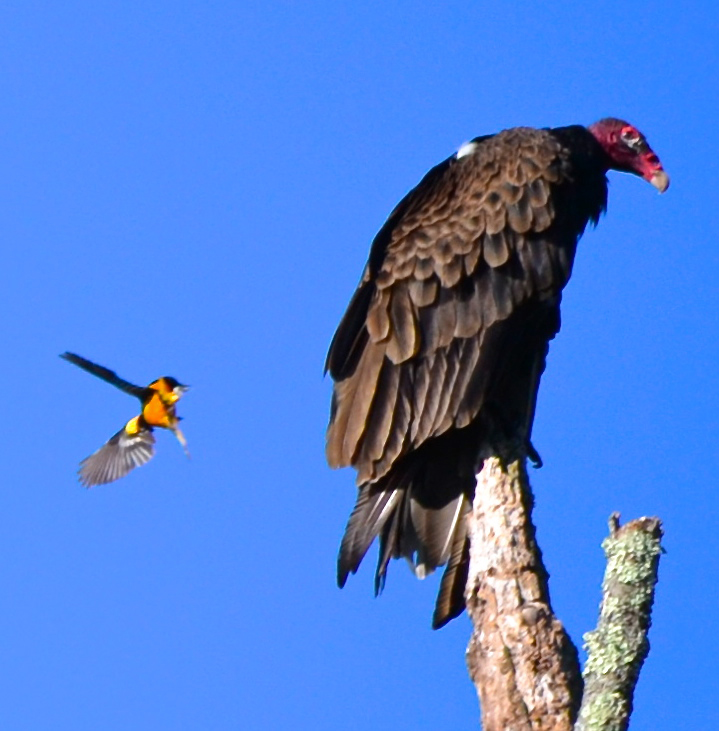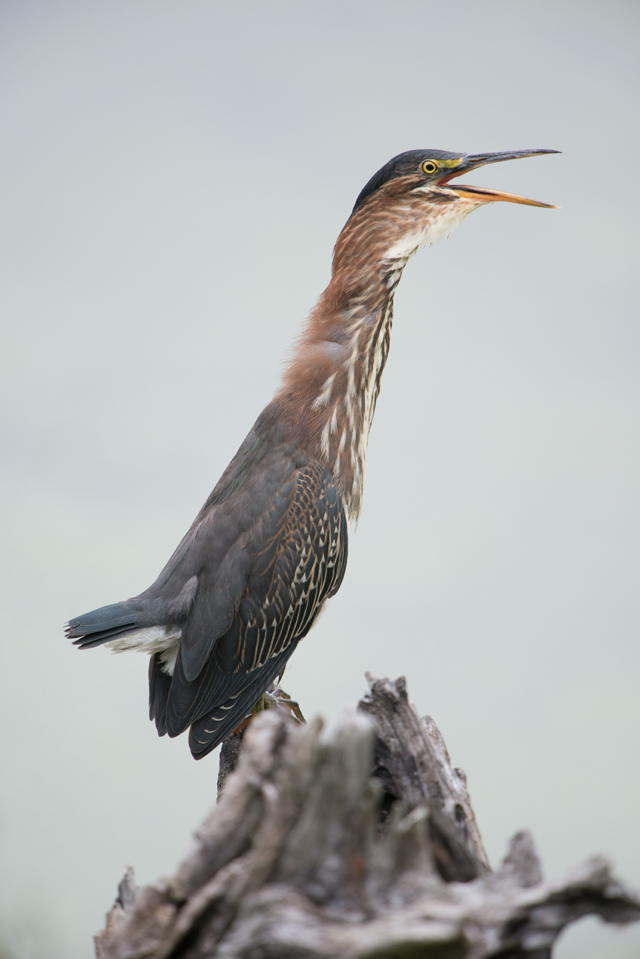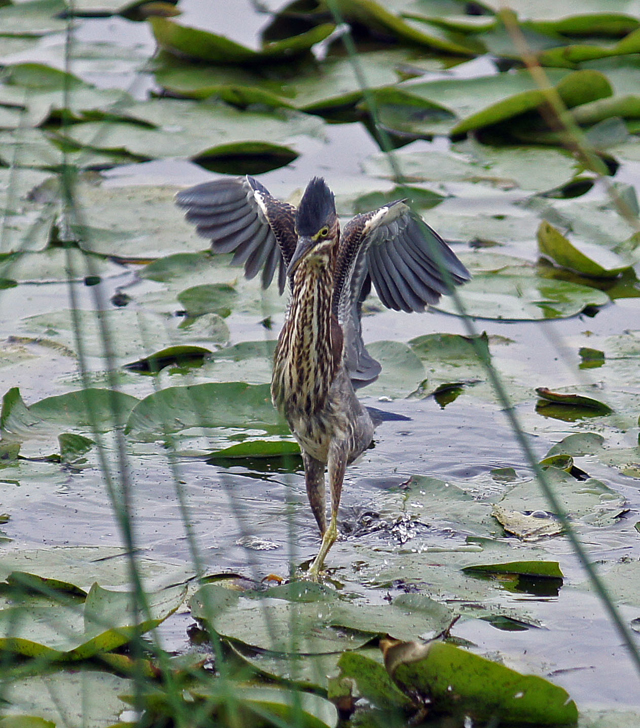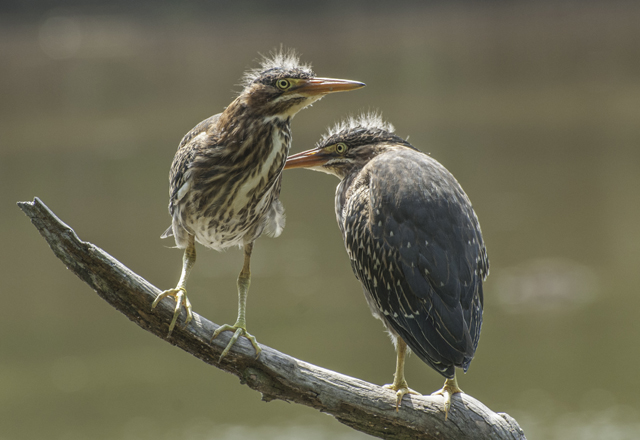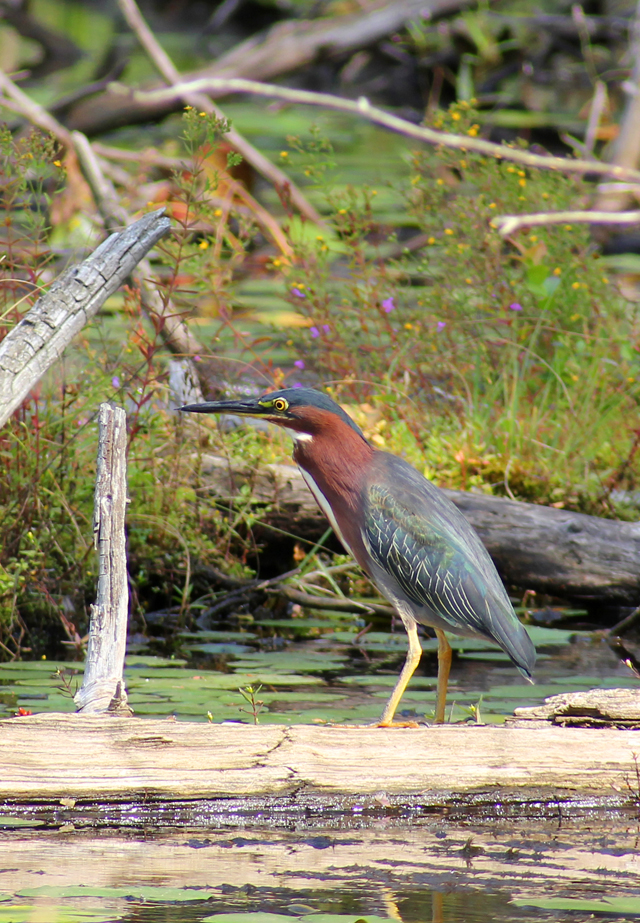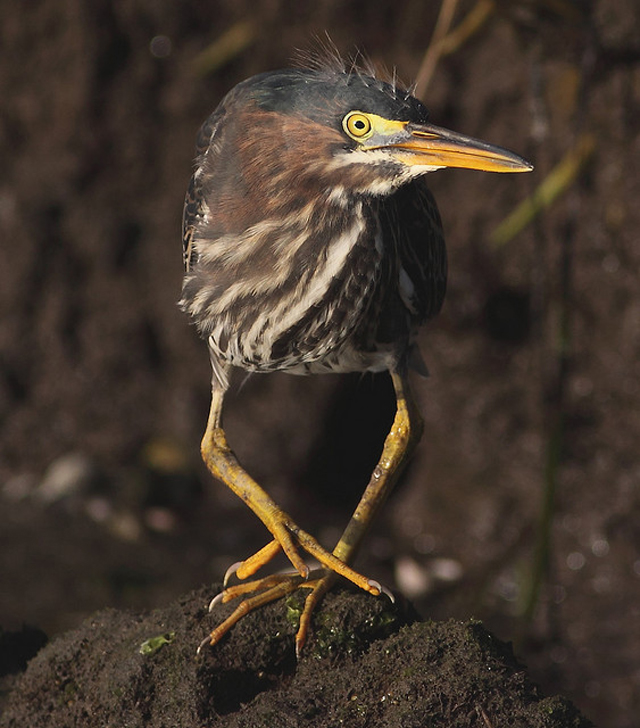Have you ever seen small birds dive-bombing a larger one—often a bird of prey? This behavior is called “mobbing,” and it’s a common phenomenon that you may encounter any time you’re outdoors.
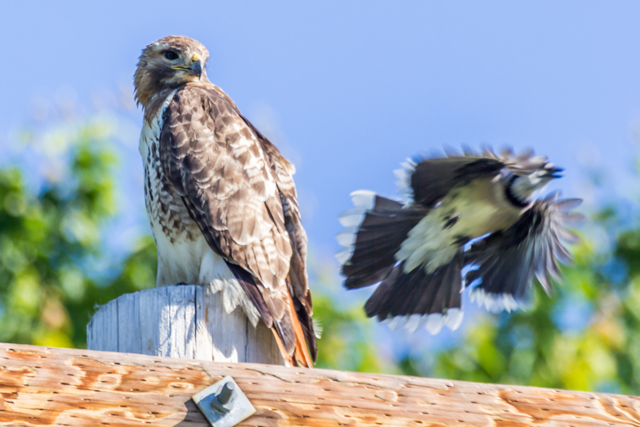
Blue jay mobbing red-tailed hawk © Phil Doyle
The Mobsters
Mobbing occurs when birds of one or more species aggressively approach a bird perceived as a threat, either perching near it or swooping at it while making loud “alarm” calls. The most vigilant and noisy mobbers include mockingbirds, tyrant flycatchers, wrens, crows, jays, blackbirds, tits, and colonial seabirds such as terns—but other species will mob, too.
The targets of all that fuss are often avian predators such as owls or hawks, but may include nest robbers such as crows, jays, and grackles, or the brown-headed cowbird, which lays its eggs in the nests of other birds. Mobbing species will also swoop at raccoons, cats, snakes, and other non-avian threats. They will even pursue harmless birds such as the insect-eating common nighthawk or the great blue heron, presumably as a case of mistaken identity!
Why Mob?
To a casual observer, mobbing can seem very risky. Smaller birds may get very close to their targets, perhaps even pecking them. Why do birds engage in this behavior? Scientists are not entirely certain. The most likely explanation: members of the avian community are alerting the neighbors that a known miscreant is on the scene. Since predatory birds typically rely on stealth to make a successful attack run, a raptor surrounded by flock of angrily squawking birds loses its element of surprise.
Anyone watching a beleaguered hawk or owl enduring this treatment may wonder why it doesn’t just snatch one of its attackers for a quick snack. But because of their speed and agility, the mobbers almost always have the advantage against a perched raptor. Since the predator has lost whatever advantage it may have had from camouflage or stealth, swiping at its attackers may simply not be worth the energy.
Follow That Mob
Experienced birders use the mobbing phenomenon to locate and attract birds that would otherwise go unobserved. Keep an ear and an eye out for birds of different species making a fuss: they may guide you to a special sighting of a perched owl or hawk.


